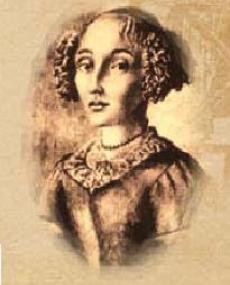
Anna De Koningh was the daughter of Angela van Bengale. She arrived with Angela from Batavia, but who her father was is unknown. Like her mother, Anna de Koning was to make quite a name for herself at the Cape, moving from being a slave to becoming the mistress of that great Cape property, Groot Constantia.
It is believed that Anna was born in bondage somewhere around 1656 in Batavia, meaning she was very young when she arrived at the Cape. Anna, the only slave from the time of whom there is a portrait, was considered a true beauty in Cape society. On 10 September 1678, Anna married Oloff Bergh, a very well to-do gentleman who was one of Governor Simon van der Stel’s favourites at the Cape.
Oloff Bergh was of Swedish descent. He was born in 1643 and arrived at the Cape in 1676 when he was only 24 years old. He became a trusted employee of Governor Van der Stel and in 1686, as a reward for his hard work in retrieving treasure from a nearby shipwreck, Bergh was appointed to the High Court of Justice. In 1687, Anna’s husband was put on trial under the suspicion of having taken valuable goods from a shipwreck and hiding them from the Company. In May of that year Bergh was banished to Robben Island taking his poor wife Anna with him. In September 1690, after three years imprisonment, first on Robben Island, and then in the castle, Bergh was finally set free and given the option of returning to his former VOC rank and serving the company elsewhere, or remaining in the Cape as a rank-less free burgher. Bergh took the former choice and left with his whole family for Ceylon, taking Anna with him. Although there is no record of Anna’s feelings or situation during this tumultuous time in her husband’s life, it was undoubtedly a difficult period for her. How Anna felt about returning to Ceylon, so near to the place where her mother was taken by slavers, is unknown.
In 1695, five years after leaving, Bergh and Anna returned to the Cape from Ceylon. In Ceylon, Bergh built a record of service that was so fine that he was appointed Captain of the Garrison. Upon their return Bergh and Anna, with their children, moved into a comfortable residence on the Heerengracht, near the Dutch Reformed Church.
In 1712 Simon van der Stel died. With his death came the division of his great and beautiful farm, Constantia, which was divided into Groot and Klein Constantia. Bergh, who was by this time a very wealthy man, bought Groot Constantia as a home for him and Anna. This meant that Anna, a child of a slave and an ex-slave herself, became the mistress of one of Cape Town's greatest residences.
Bergh and Anna had 12 children. The names of their children were Christina, Maria, Petrus, Apolonia Africana, Carolusi Erlandt, Johanna Magdalen, Dorothea Francina, Martinus, Simon Petrus, Engela and Albertus.
Bergh died in 1724 at the age of 81. Anna, however, outlived her husband by many years. Bedecked in the most extravagant jewels and as one of the wealthiest widows at the Cape, this former slave girl spurned any further advances for her hand, living out the last of years alone as the mistress of Groot Constantia.
Anna de Koning, who had been born a slave, died in 1734, a wealthy widow of a prestigious Cape gentleman and the mistress of one of the greatest properties of the Cape. At the time of her death Anna owned 27 slaves, one of which was from Bengal and one even a Zulu from Natal. As the mother of 12 children Anna, like her mother, is one of the stammoeders of South African society and many South Africans, of all colours and creeds, and in particular all of the Bergh family, can trace their lineage back to her.